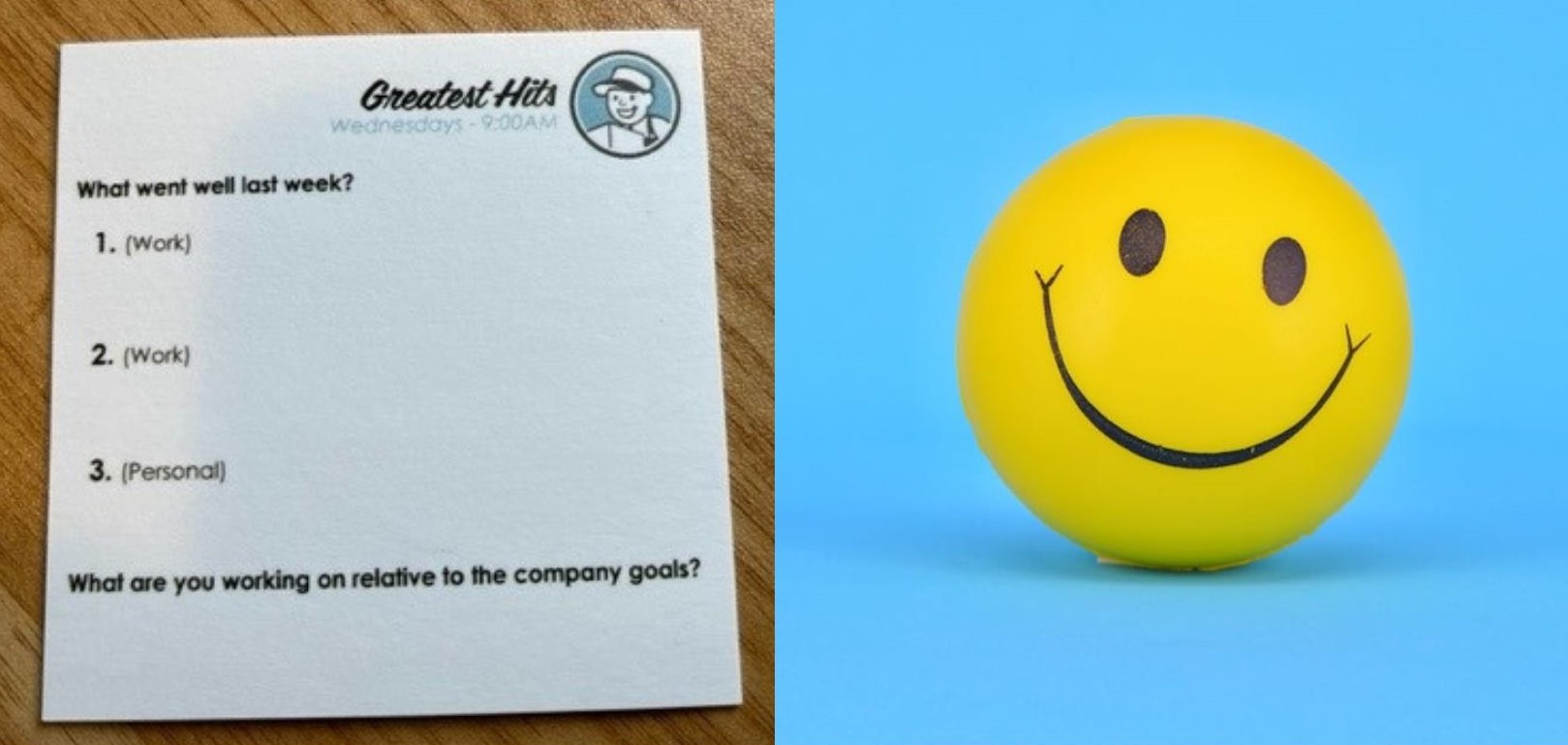
Five Noes
For the past eight years, I’ve been privileged to be part of an EO program called the Entrepreneurial Masters Program, or EMP. Every year, I’ve joined 70 extraordinary classmates from over 25 different countries for an immersive four-day learning experience. Essentially, we revert to being students again, spending 10-hour days absorbing insights from expert practitioners and professors on how we can enhance both our personal lives and our businesses.
Each year, I leave with pages of notes, ideas and takeaways. But among those notes, I try to focus on two or three ideas that I can put into practice quickly.
When I left the most recent EMP installment, one of my most impactful takeaways came from one of our concluding speakers, a globally renowned mentalist named Wayne Hoffman. One of Hoffman’s points of emphasis was the importance of understanding that getting more “yeses” in life also involves getting more “noes.”
To demonstrate his theory, Hoffman invited a volunteer from the audience to join him at the front of the room. He presented them with a two-sided yes/no coin he’d purchased from Amazon. He then offered the volunteer a deal: They had thirty seconds to make as many flips as they could and would win $20 every time the coin flipped to “yes.” There would be no negative consequences for flipping a “no.”
The volunteer took the deal, and as soon as Hoffman said “go,” started flipping the coin with fervor. Eventually, the volunteer churned out seven yes responses and an approximately equal number of no responses. Hoffman promptly handed over $140 in cash to the participant. I was wishing I had raised my hand first.
Once the exercise was complete, Hoffman imparted the lesson: “yeses” matter more than “noes,” and taking more chances generates more of each. While there’s a near equal chance of getting told “no” in our endeavors, in virtually all cases, there is no penalty for that rejection beyond some brief discomfort or embarrassment. On the other hand, when you get a “yes,” there is likely a positive outcome on many fronts.
This was why Hoffman made it clear there was no financial loss or penalty for flipping a “no.” In a real-world example, with the same yes/no construct, but without the same level of clarity, the individual would likely have overthought the situation and may not have taken action. This is counterproductive; if you take more chances, the ratio of “yeses” to “noes” does not change. While you’ll get a lot of “noes,” you will get more “yeses.”
If you see a person who appears to have received a lot of “yeses,” you can be sure they’ve also received plenty of “noes” as well. A critical element in getting more of what we seek is enduring plenty of rejections along the way.
Hoffman also suggested that we often have a higher probability of getting a “yes” than we expect in even the most outlandish cases. During his session, to illustrate this point, Hoffman asked me for the name of a local restaurant and then called on speakerphone to see if they would give me a free meal for mentioning the restaurant by name to a room full of company leaders. The person answering the phone didn’t reject Hoffman immediately and took a message and offered to check with the manager.
Hoffman closed with one last challenge: He urged each member of the audience to try to get five “noes” over the next week. He also shared that, from his experience, it would be harder than we imagined. Sometimes a request is so crazy that people are too intrigued or thrown off to say “no.”
In the following days, our EMP WhatsApp group was flooded with tales and pictures of these various attempted “noes.” Some were hilariously outlandish, yet the principle seemed to hold true. The more the group members asked, the more “yeses” they accumulated, even if they were accompanied by some “noes.”
While I knew this lesson instinctively, it was a huge reminder for me that one of the biggest keys to getting more “yeses” in life is becoming desensitized to “noes.”
In life and business, we can all have more success if we commit to taking more initiative, being less indecisive, and being willing to endure some emotional discomfort. This seems like a small price to pay for getting more of what you want.
This week, I challenge you to get to five “noes” yourself, and maybe challenge the team you lead to do the same.
This post originally appeared on Robert Glazer’s Friday Forward newsletter and is reprinted here with permission.
Contributed by Robert Glazer, a former EO Boston member who is the founder and chairman of the board of Acceleration Partners, a global partner marketing agency and the recipient of numerous industry and company culture awards. He is the author of the inspirational newsletter Friday Forward and No. 1 Wall Street Journal bestselling author of five books: Elevate, Friday Forward, How To Thrive In The Virtual Workplace, Moving To Outcomes and Performance Partnerships. He is also the host of The Elevate Podcast.
For more insights and inspiration from today’s leading entrepreneurs, check out EO on Inc. and more articles from the EO blog.









